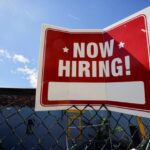By Panos Mourdoukoutas
The rally in U.S. equities gained strength this week, with both the S&P 500 Index and Nasdaq Composite Index reaching record highs amid the closing of trade deals, steady bond yields, and mixed earnings.
The Nasdaq posted its longest streak of consecutive record closes in more than a year, hitting new highs for 10 sessions in a row. Meanwhile, the S&P 500 also closed at a record high for five consecutive sessions.
The S&P 500 closed at 6,388 on July 25, up by 1.46 percent for the week and near its all-time high reached during the day. The Dow Jones Industrial Average climbed by 1.26 percent to finish at 44,901. The Nasdaq rose by 1.02 percent, to 21,108.32, also near its all-time high, while the Russell 2000 gained 0.94 percent.
Stocks opened sharply higher on July 21, building on the gains of the previous week, with both the S&P 500 and the Nasdaq nudging new highs on lower bond yields.
The yield on the benchmark 10-year Treasury note fell by nearly 5 basis points to 4.37 percent on the day, marking the fourth consecutive decline and the lowest level in more than a week. The drop followed a weak reading of The Conference Board Leading Economic Index (LEI) for the United States, which declined by 0.3 percent in June, to 98.8, after remaining unchanged in May.
For the first quarter of this year, the index is down by 2.8 percent—significantly faster than the 1.3 percent decline over the second half of 2024. The drop would have been steeper if not for a robust stock market, a key component of the index.
“The U.S. LEI fell further in June,” said Justyna Zabinska-La Monica, senior manager of business cycle indicators at The Conference Board.
“For a second month in a row, the stock price rally was the main support of the LEI. But this was not enough to offset still very low consumer expectations, weak new orders in manufacturing, and a third consecutive month of rising initial claims for unemployment insurance.”
Financial markets closely follow the Leading Economic Index, as it provides an early signal of economic turning points. With more than two consecutive negative readings, a high probability of an impending recession is indicated.
Meanwhile, The Conference Board forecasts a slow growth in 2025 rather than an outright recession.
“Real GDP is projected to grow by 1.6 percent this year, with the impact of tariffs becoming more apparent in H2 as consumer spending slows due to higher prices,” Zabinska-La Monica said.
However, slow growth bodes well for lower inflation and interest rates, which raises investor appetite for high-risk assets, such as equities, helping the S&P 500 reach new highs in the early morning trade on July 21.
The rally cooled off by late afternoon, as profit-taking and anxiety over upcoming high-profile earnings later in the week took hold.
Profit-taking accelerated on the morning of July 22, as traders and investors sold stocks in the winning sectors such as technology. Disappointing earnings from General Motors, which weighed on auto stocks, added to the selloff.
Losses in the tech and auto sectors were partially offset by gains in the homebuilding sector, thanks to better-than-expected earnings from D.R. Horton. The market headed north again in late afternoon trading, with the S&P 500 and Nasdaq reaching new highs.
Markets opened higher on July 23 on news of a trade deal between the United States and Japan, as well as hopes for a similar deal with the European Union, ahead of the Aug. 1 deadline for completing these agreements.
Headlines on trade, the U.S. economy, and earnings continued to drive the market for the rest of the week. For instance, strong earnings from Alphabet, the parent of Google, and weak earnings from Tesla on the afternoon of July 23 set up the equity market for a mixed opening on the morning of July 24.
Market bulls got the upper hand by midday, helping both the S&P 500 and Nasdaq reach yet another new high.
Aiding positive sentiment for equities was talk of a trade deal with the EU, ahead of President Donald Trump’s scheduled meeting with European Commission President Ursula von der Leyen on July 27.
In addition, a July 24 report from the U.S. Department of Labor indicated the resilience of the labor market. Initial jobless claims in the United States declined by 4,000 from the previous week to 217,000 in the third week of July. It’s the sixth consecutive decline in initial claims to the lowest since April, and below market expectations.
The labor market’s strength helped push Treasury bond yields higher, but they ended very close to where they began trading on July 21.
Bret Kenwell, a U.S. investment analyst at eToro, sees the better-than-expected report as easing investor fears over the state of the labor market.
“With worries easing around jobless claims, investors’ focus will soon shift to next week’s JOLTS report and monthly jobs report,” he told The Epoch Times.
Kenwell said that while the labor market isn’t operating at full strength, it’s showing no signs of distress either.
“If next week’s report gives another reassuring nod to the labor market, investors may breathe a further sigh of relief—and it may continue to give the Fed breathing room on its interest-rate policy,” he said, referring to the nonfarm payroll report scheduled for Aug. 1.






